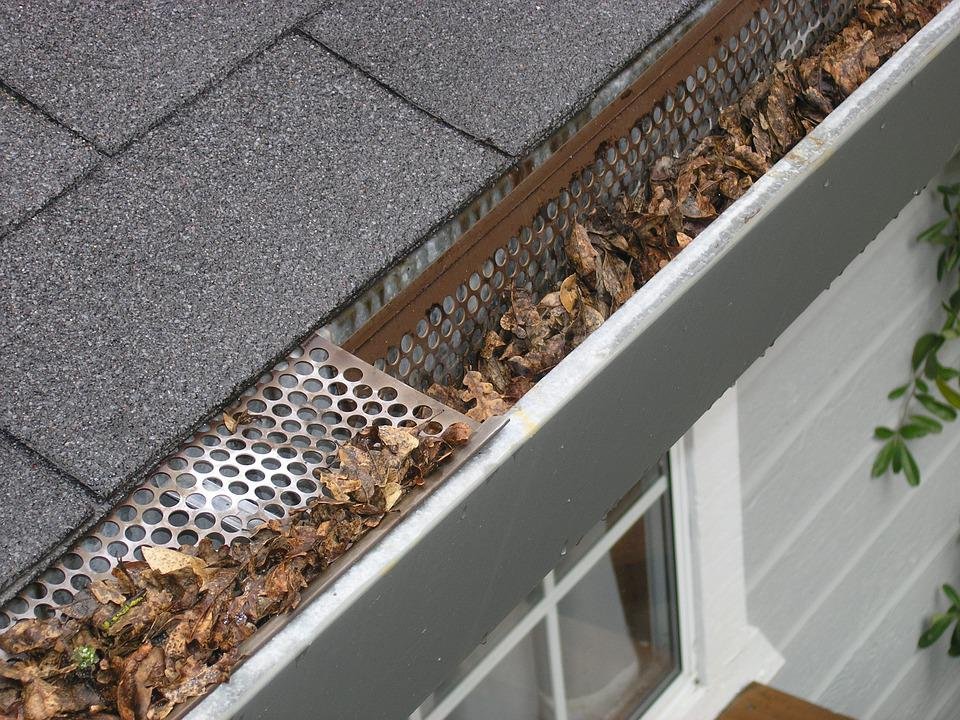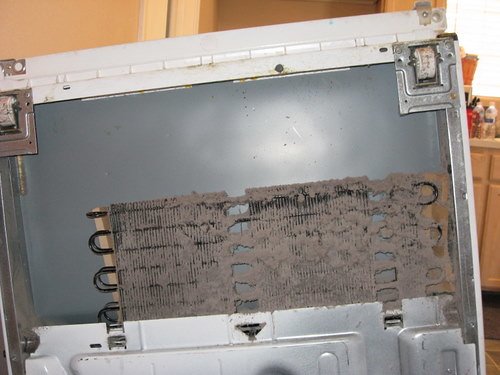Also known as: Seven areas to keep clean if you don't want a bigger mess.
Table of Contents
The worst thing about washing machines is that they have to be cleaned. Most of us don’t even think about that. The problem is that by not doing so, you can end up with some horrible messes. Absolute disasters of messes if we’re being honest. It’s not just your washing machine though, it’s also several other places around your home that need to be cleaned regularly to prevent a variety of disasters around the home.
Gutters
When To Do It: Twice a year, best at the end of fall and spring.
Why To Do It: If your gutters aren't cleaned regularly, you will get a buildup of leaves and other debris. Not so big a deal, until that starts to rot in summer or freeze in winter. Then the gutters get heavier and over time will start to pull away from your house. Or they might just overflow in certain sections where you don't see it. Which if you're lucky, will lead to an overwatered section of your garden. If you're not lucky it can lead to a molded wall and destabilization of your home's foundation.
How To Do It: To put it simply, you'll want a three-step process. First, you want to go by eye to look for areas that are damaged or overflowing, or possibly pulling away from the roof. From there you'll need a ladder so that you can go ahead and dig everything out. Whether you're dealing with compacted leaves and debris or just some slight build-up, you'll want gloves and a trashcan at least. Your final step is using a hose, to check that you've gotten everything cleaned out. For a more in-depth guide, check out the additional reading at the bottom of the post.
Air Ducts
When To Do It: Every 3 to 5 years, fewer if you have pets that shed.
Why To Do It : This one isn't as obvious a threat to your home. For many of us it just means a little extra hair or dust floating in our homes. Over time though it can lead to mold, mildew, and fire hazard in your home. Which can sound weird. Mold, mildew and a potential fire hazard? Yup. During the wetter times, air can become trapped in the ducts and the build-up, leading to mold and mildew spreading throughout the ducting system and your home. During dry seasons though, when the material trapped in the system is bone dry, you can end up with a fire hazard.
How To Do It: Call a professional for this one. While all of the others can be done with only one or two tools, in order to do the best job of cleaning out all of the ducting in your home, you want to call a professional in. (Sadly, that's not us. We'll happily fix your appliances though!)
Dryer Duct
When To Do It: Twice a year, best in spring and fall.
Why To Do It: Much like your air ducts, your dryer duct is sucking dust, dirt, pet hair, dander, and other materials out of the air and your dryer. That gets caught in the dryer duct and over time it becomes compacted. This is a fire hazard, especially given how dry it is kept. While cleaning out your lint trap every time you run your dryer is a good start, it's doesn't get rid of everything. Cleaning it out will also make your dryer work more efficiently and effectively, allowing for air to flow freely.
How To Do It: Always start with unplugging and disconnecting your dryer from any sources of power, be it gas or electric. From there, take a vacuum and clean up as much of the inside of the dryer, and the vents inside and outside as possible. Then, use a dryer tool to work the lint-free inside the duct itself. This is a long-handled tool with a brush attachment that you can pick up at your local hardware store for relatively cheap. Once you've done that, grab your vacuum again and suck up everything from where you were working on the duct and from inside the duct itself. Reconnect everything carefully, turning the power back on as the final step and you're good to go!
Refrigerator Coils
When To Do It: Once a year, more often if you have pets that shed a lot.
Why To Do It: The coils are part of the system that keeps your refrigerator cool. If the coils are covered in dust and hair, then your refrigerator has to work overtime and will have a shorter life for it.
How To Do It: Start by transferring as much of your food to a cooler as you can, to lighten the load. Then unplug it and go looking for the coils. Sometimes they'll be under a panel in the front, on the back, or on top if you have a built-in unit. Once you've found your coils, you'll want to grab your vacuum and a dust mask, these coils are going to be covered in a very fine dust that you don't want to breathe in. Now use a long-handled brush to gently scrape away at the coils. You want to go on top of them and between them, trying to remove as much of the dirt as possible. Once you're done with that, vacuum up all of the ick and go enjoy a hot shower.
Washer Filter
When To Do It: Once a month.
Why To Do It: Your washer filter, as we've discussed in the past, catches much of the larger debris and soap scum that comes off of your clothing during the wash. If that filter is covered over, with soap, with dirt, with debris, then the water can't pass through and it will begin to back up. It can even lead to the washing machine flooding over, and you needing to clean or even replace your floors.
How To Do It: Most of the time, a front-loading washer is meant to save you pain and annoyance... Sadly that's not the case when it comes to cleaning your filters. Look on the front for a small door, and lay out a towel and something like a casserole dish. On opening the door you should find a hose and a drain pump filter. Pull the plug from the hose and let the water empty out into your dish. There's going to be a fair amount of water in there, and it's probably going to reek and be full of ick. Once nothing else is coming out, unscrew the filter, wait for water to stop dripping out of that, and pull out the filter. It will probably have slime on it, and you might even find coins. No, this isn't where the goblins stash all of your lost socks (sadly.) Dump out the filter, and use an old toothbrush and some warm water to scrub it clean.
If you have a top loading machine, you're in luck! The filter is going to be in the drum or on the back, but check your manual if you can't quite find it. Once you've located it, it's easy to pull out and rinse with hot water.
Dishwasher Filter
When To Do It: Once a month
Why To Do It: Your dishwasher filter is much like your washer filter. It collects dirt and food debris and keeps it from going out with the water. (Because that would lead to the drain becoming clogged over time.) At first, this issue can lead to dishes not getting cleaned properly, and with time to the machine flooding. Not fun!
How To Do It: Remove your lower rack and look for a mesh filter on the floor of your dishwasher. If you don't see what we're talking about, grab your manual to find out where the manufacturers hid it. Found it? Ok, at this point, it should be a matter of unscrewing the filter and rinsing it with hot water and soap, and then pop it back in. Nice and easy, and it keeps your kitchen from flooding.
Shower Drain
When To Do It: Some will say when the water becomes ankle deep. We say you should do it as soon as you notice the water is beginning to back up.
Why To Do It: Flooding bathtubs. That's all we have to say. And just. EW.
How To Do It: Grab a facemask, some old clothes, and a drain snake. Some people will say to start with a drain cleaner, like draino but as long-hair having people, we suggest starting with a snake. Wriggle it around until it goes all the way down your drain and then draw it out. It's going to be gross. It's going to be a lot of hair, dirt, and soap scum. We know. Depending on when the last time this was done, you might have to do this more than once. Once you've pulled everything that you can out, grab a kettle, boil some water and send that down the drain. Let that do its work and then an hour later, you can hit the drain with a drain cleaner. For best results, we advise letting that sit overnight, this way it's undisturbed for several hours. If that doesn't clean up the issues with water backing up, we'll advise calling a plumber as the problem could be more than just a clog in your drain.
Congrats you've just tackled seven of the most common problems in owning a home. As you saw each of these problems can cause serious issues, many of them involving water, soap, and ick going everywhere. Did we miss any areas? Are there appliances or other major areas that you're curious about how to clean? drop us a line over on our Facebook page or in the comments below. We'd love to hear from you.
If doing all of this cleaning hasn't solved the issues that your refrigerator, washing machine, dishwasher or dryer are giving you, you might want to give us a call. We'll work with you to set up a time that fits your schedule, and help to not only determine what the problem is, but more importantly, to fix it. At Appliance Rescue Service, we're not happy until we've gotten your appliances back in tip-top shape.
You can call us at ((214) 599-0055) or reach out to us on our contact page to set up an appointment time that works for you.
Additional Reading:
How to Deep Clean Your Dishwasher












